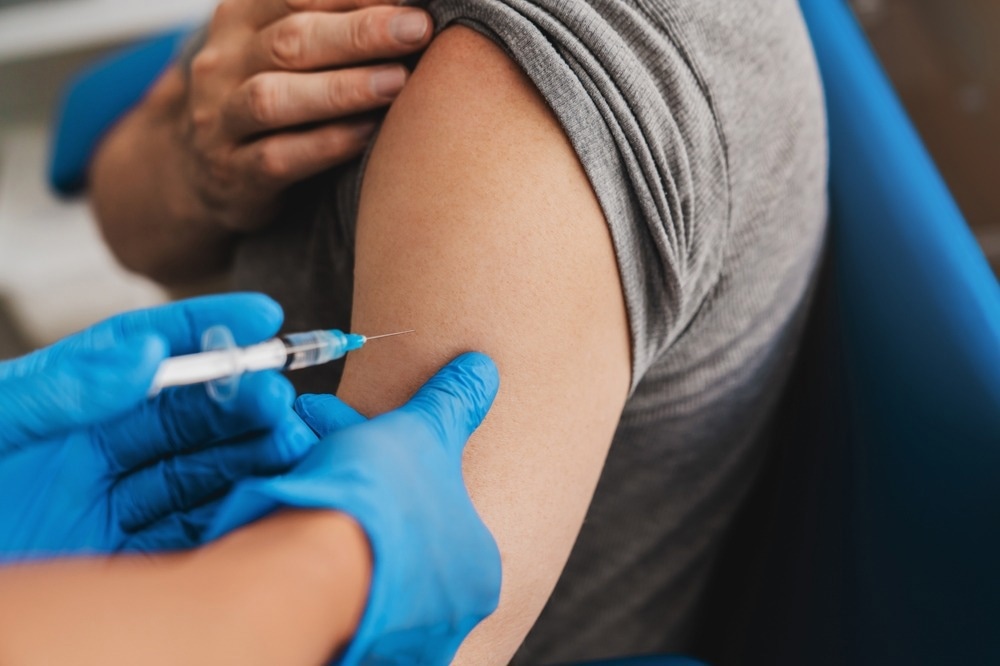In a recent study posted to the Preprints with The Lancet* server, researchers examine whether the involvement of the ipsilateral or contralateral lymph nodes differentially affected vaccine-induced cellular and humoral immunity during sequential vaccination. This observational study was conducted among a cohort of severe acute respiratory syndrome coronavirus 2 (SARS-CoV-2) naïve individuals who received two doses of the Pfizer-BioNTech BNT162b2 coronavirus disease 2019 (COVID-19) messenger ribonucleic acid (mRNA) vaccine.

Study: Differences in SARS-CoV-2 Specific Humoral and Cellular Immune Responses after Contralateral and Ipsilateral COVID-19 Vaccination. Image Credit: Inside Creative House / Shutterstock.com

 *Important notice: Preprints with The Lancet publishes preliminary scientific reports that are not peer-reviewed and, therefore, should not be regarded as conclusive, guide clinical practice/health-related behavior, or treated as established information.
*Important notice: Preprints with The Lancet publishes preliminary scientific reports that are not peer-reviewed and, therefore, should not be regarded as conclusive, guide clinical practice/health-related behavior, or treated as established information.
Background
As with many other vaccines, clinicians follow a dual-dose primary vaccination regimen for BNT162b2. According to current recommendations, BNT1262b2 is administered in the deltoid muscle in the upper arm.
Generally, an individual seeking vaccination elects the non-dominant arm for administering both doses of the BNT162b2 vaccine. Limited studies have examined the effect of choosing the ipsilateral or contralateral side of the arm when administering the second BNT162b2 vaccine dose.
Nevertheless, some studies have examined these effects in adults and infants for other vaccines, including the rabies vaccine, which is given as a four-dose series. However, these studies were limited to the analysis of vaccine-triggered antibodies and yielded conflicting results. Thus, there is an urgent need for more studies addressing how vaccine administration site affects the outcome of sequential vaccination.
About the study
In the current study, researchers extensively searched the Cochrane Central Registry and Medline to retrieve controlled human trials that examined the immunological effects of sequential vaccinations carried out in different extremities using relevant search terms, including contralateral or ipsilateral.
Study participants were recruited from two sites in Germany between March 1, 2021, and September 10, 2021. These SARS-CoV-2 naïve individuals had either received both doses of BNT162b2 in the same arm or the second dose in their contralateral arm.
Heparinized blood samples from all study participants were collected 12 to 22 days after receiving the second vaccine dose. SARS-CoV-2 spike (S)-specific immunoglobulin G (IgG) levels in these samples were subsequently determined.
A subset of the larger study cohort was formed to quantify and characterize differential blood counts, B-cell and T-cell subpopulations, and SARS-CoV-2 S-specific CD4 and CD8 T-cell levels using flow cytometry (FC). The researchers also recorded BNT162b2 vaccine-related adverse events in the first seven days post-first and second vaccination and analyzed this data using the Χ2 test.
Study findings
BNT162b2 recipients at ipsilateral or contralateral sides tolerated the vaccine well, with the only adverse events including pain at the injection site and fatigue. Neutralizing antibody (nAb) activity was markedly lower post-contralateral vaccination; however, the magnitude of SARS-CoV-2 S-specific IgG was similar in both groups. Fewer individuals in the contralateral vaccination group exhibited an adequate S-specific CD8 T-cell response.
Although the magnitude of S-specific CD4 T-cells was comparable between both groups, the cytotoxic T-lymphocyte-associated protein 4 (CTLA-4) expression was markedly higher for the contralateral vaccination group. Furthermore, the elicited immune responses were highly variable across both groups.
A likely explanation for these observations is the limited involvement of contralateral lymph nodes, whereas ipsilateral lymph nodes are much larger with higher metabolic activity. Antigen persistence on follicular dendritic cells in the lymph nodes also facilitates B-cell proliferation and affinity maturation after secondary boosting.
Notably, the current study findings align well with previous studies and further validate a more robust induction of specific immunity after ipsilateral vaccination, especially in adults. Note that the right arm has lymphatic drainage through the right lymphatic duct, whereas the left arm, similar to the legs, drains through the thoracic duct.
Conclusions
The activity of vaccine-induced antibodies contributes to protection against SARS-CoV-2 infection, with specific T-cells protecting vaccinated individuals from severe COVID-19. The study findings indicate that ipsilateral administration for the second dose of the COVID-19 vaccine might contribute to overall vaccine effectiveness on a population level.
Moreover, it is feasible to translate these findings into clinical practice without incurring additional costs or posing any potential safety issues. In addition, these findings have relevance to other vaccines administered as a dual dose regimen.

 *Important notice: Preprints with The Lancet publishes preliminary scientific reports that are not peer-reviewed and, therefore, should not be regarded as conclusive, guide clinical practice/health-related behavior, or treated as established information.
*Important notice: Preprints with The Lancet publishes preliminary scientific reports that are not peer-reviewed and, therefore, should not be regarded as conclusive, guide clinical practice/health-related behavior, or treated as established information.